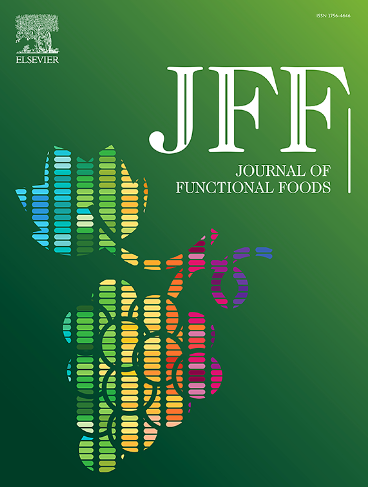牛奶过敏:它的临床方面,机制,和创新的缓解策略超越酶水解
IF 4
2区 农林科学
Q2 FOOD SCIENCE & TECHNOLOGY
引用次数: 0
摘要
牛奶过敏(CMA)是最常见的食物过敏之一。传统的降低牛奶过敏原的方法,如酶水解,有局限性,包括不完全的过敏原降解和潜在的残留过敏原。本综述旨在提供目前对CMA的了解,包括其危险因素,过敏原概况,免疫机制和管理策略。然后研究了酶水解在减轻过敏原中的作用,它的应用,以及它固有的局限性。最后,讨论转向新兴的创新策略,如高压处理,脉冲电场,先进的糖基化终产物修饰,以及生物技术的最新进展,如CRISPR-Cas9和微生物工程,旨在更有效地降解牛奶过敏原。这些方法旨在降低致敏性,同时保留牛奶的营养和功能特性,为该领域提供了潜在的进步,并为研究和临床实践的未来方向奠定了基础。本文章由计算机程序翻译,如有差异,请以英文原文为准。

Cow milk allergy: Its clinical aspects, mechanisms, and innovative mitigation strategies beyond enzymatic hydrolysis
Cow milk allergy (CMA) is one of the most common food allergies. Traditional methods for reducing milk allergenicity, such as enzymatic hydrolysis, have limitations, including incomplete allergen degradation and the potential for residual allergenicity. This review aims to provide the current understanding of CMA, including its risk factors, allergen profile, immune mechanisms, and management strategies. It then examines the role of enzymatic hydrolysis in mitigating allergenicity, its applications, and its inherent limitations. Finally, the discussion turns to emerging innovative strategies such as high-pressure processing, pulsed electric fields, advanced glycation end-product modification, and recent advancements in biotechnology, such as CRISPR-Cas9 and microbial engineering which are designed to more effectively degrade cow milk allergens. These approaches aim to reduce allergenicity while preserving the nutritional and functional properties of milk, offering potential advancements in the field, and setting the stage for future directions in both research and clinical practice.
求助全文
通过发布文献求助,成功后即可免费获取论文全文。
去求助
来源期刊

Journal of Functional Foods
FOOD SCIENCE & TECHNOLOGY-
CiteScore
9.60
自引率
1.80%
发文量
428
审稿时长
76 days
期刊介绍:
Journal of Functional Foods continues with the same aims and scope, editorial team, submission system and rigorous peer review. We give authors the possibility to publish their top-quality papers in a well-established leading journal in the food and nutrition fields. The Journal will keep its rigorous criteria to screen high impact research addressing relevant scientific topics and performed by sound methodologies.
The Journal of Functional Foods aims to bring together the results of fundamental and applied research into healthy foods and biologically active food ingredients.
The Journal is centered in the specific area at the boundaries among food technology, nutrition and health welcoming papers having a good interdisciplinary approach. The Journal will cover the fields of plant bioactives; dietary fibre, probiotics; functional lipids; bioactive peptides; vitamins, minerals and botanicals and other dietary supplements. Nutritional and technological aspects related to the development of functional foods and beverages are of core interest to the journal. Experimental works dealing with food digestion, bioavailability of food bioactives and on the mechanisms by which foods and their components are able to modulate physiological parameters connected with disease prevention are of particular interest as well as those dealing with personalized nutrition and nutritional needs in pathological subjects.
 求助内容:
求助内容: 应助结果提醒方式:
应助结果提醒方式:


